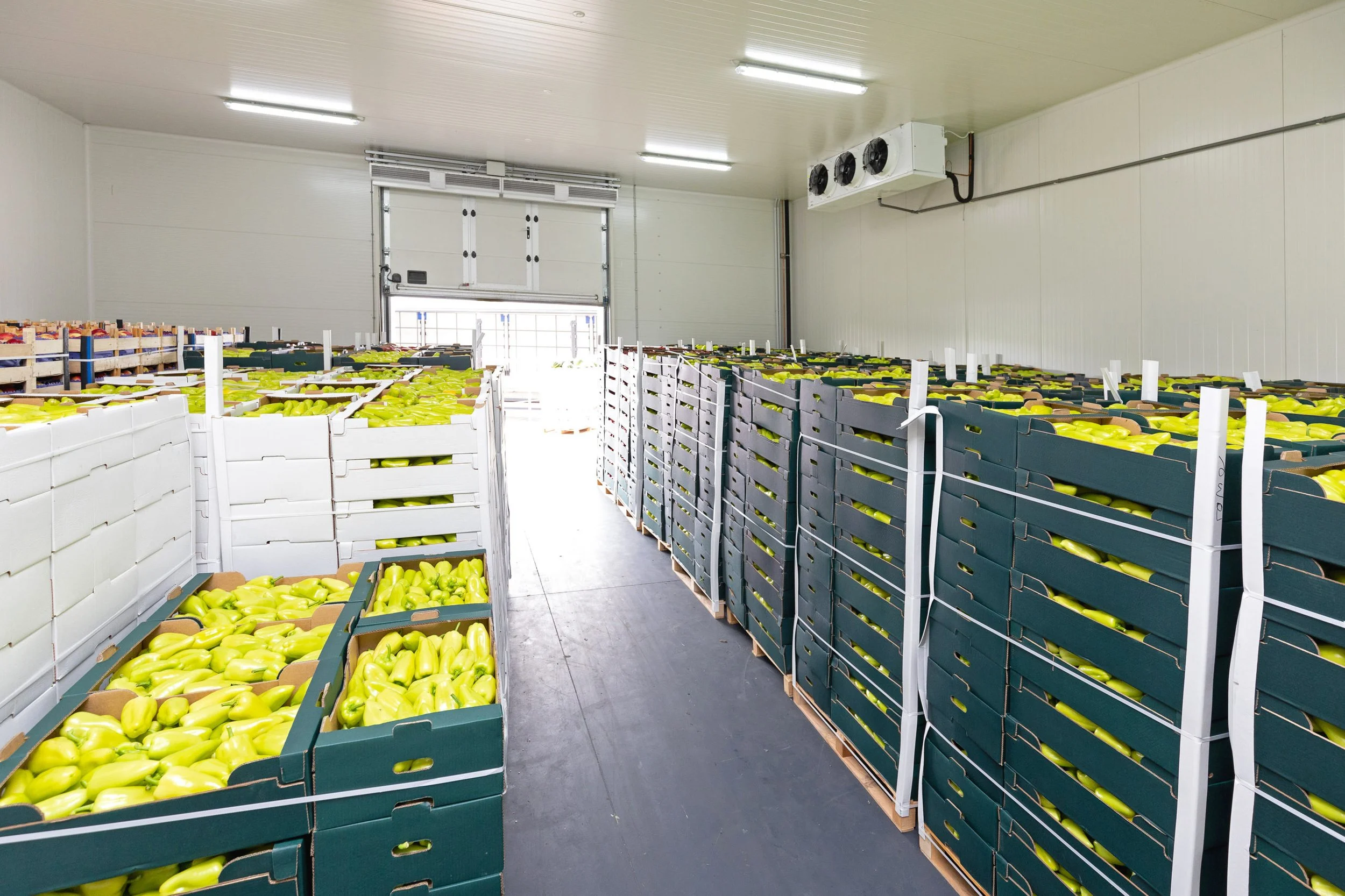How Long Does Fresh Produce Sit in Storage?
Fresh produce is a staple in most of our diets. Whether it's the crispness of an apple, the juiciness of a tomato, or the sweetness of a strawberry, we rely on the availability of these items year-round. But have you ever wondered how your favourite fruits and vegetables manage to remain fresh even when they're not in season locally? The answer lies in the intricate and often surprising world of long-term storage practices within the food supply chain.In this blog, we'll take a deep dive into how fresh produce supplies are stored for extended periods, focusing on two key storage methods: controlled atmosphere (CA) storage and cold storage, and exploring how long certain fresh produce items can be held using these techniques.
Controlled Atmosphere Storage
One of the key methods used to extend the shelf life of fresh produce is controlled atmosphere (CA) storage. These carefully constructed rooms allow producers to carefully manage the levels of oxygen, carbon dioxide, humidity, temperature, and ethylene within storage facilities. By controlling these factors, fruits and vegetables can be stored for much longer periods without losing their freshness.For example, certain apple varieties, which are typically harvested in the autumn, can be stored in controlled atmosphere rooms where oxygen levels are reduced and temperature and humidity are tightly regulated. This slows down the natural ripening and decay processes. Apples stored using this method can stay fresh for several months, making them available year-round.
PostHarvest’s Atmos system sits within these CA storage rooms, monitoring and regulating optimal conditions in real-time for long-term storage of fresh produce supplies.
Cold Storage
Cold storage is another common method for prolonging the shelf life of fresh produce. It's particularly important for certain items like berries, leafy greens, and stone fruits. The refrigeration of such items helps slow down the natural enzymatic and microbial processes that cause spoilage.
Leafy greens, such as lettuce and spinach, thrive in cold storage conditions. Typically, these greens are stored at temperatures just above freezing to maintain their crispness and freshness. The cold environment helps to reduce moisture loss and prevents the growth of harmful microorganisms that can lead to wilting and decay.Berries, such as strawberries and blueberries, are also beneficiaries of cold storage. These delicate fruits are sensitive to temperature variations and high humidity, which can lead to mould and decay. Refrigerated environments help to maintain the integrity and quality of berries, ensuring they can be enjoyed year-round.
Plums and apricots, being stone fruits, are often kept in cold storage to maintain their quality for many months. These fruits benefit from low temperatures, which help to reduce overripening and mushy textures, extending their shelf life. Cold storage not only preserves the texture and taste of these fruits but also prevents potential moulds and fungi from forming.
How Long Can Produce Stay Fresh in CA Storage and Cold Storage?
The longevity of fresh produce in controlled atmosphere storage and cold storage largely depends on the specific type of produce, storage conditions, and the quality of the product at the time of storage.In CA storage, some fruits, such as apples, can be stored for several months. Varieties like Braeburn, Fuji, and Pink Lady apples can often be stored for nine to twelve months once the oxygen level has been lowered to 1.2 per cent. Other fruits like pears, plums, and kiwis also benefit from CA storage, with varying storage durations based on the specific conditions and the produce's initial quality.
For vegetables, potatoes and onions can be kept in CA storage for several months, extending their shelf life well beyond the harvest season. Most potatoes will keep for up to a year if they are first 'cured', by storage at moderate temperatures (20 °C) and high humidity (80–100 per cent) for 1-2 weeks.
For potatoes that are intended for long-term storage, a chemical sprout-inhibitor spray may be applied in the field, during grading, or in the cold store. For carrots, immediate washing and cooling are essential to maintaining the carrots' crispness. Often, they are cooled in chlorinated water before packing. Storage just above 0 °C inhibits sprouting and decay, while raised humidity prevents desiccation.In these conditions, mature-topped carrots will last 7-9 months, though 5-6 months is more typical.
In Cold storage, the longevity of fresh produce varies based on factors like temperature and humidity control. Leafy greens and herbs can typically be stored for a few weeks, while fruits like strawberries and blueberries can last for a few weeks to a few months.
It's important to note that while CA storage and Cold storage significantly extend the shelf life of fresh produce, the quality of the produce at the time of storage is a crucial factor. High-quality produce with minimal damage and blemishes tends to fare better during extended storage.In short, the availability of fresh produce year-round is made possible through a combination of innovative storage methods like CA and Cold storage.
The facility technologies involved have revolutionised the way we store and enjoy fruits and vegetables, allowing us to savour their freshness, flavour, and nutritional benefits long after the harvest season has passed. Understanding these storage practices sheds light on the intricate processes within the food supply chain and the efforts made to reduce food waste while ensuring a consistent supply of fresh produce to our tables. So, the next time you bite into a crisp apple or enjoy a fresh salad in the middle of winter, you can appreciate the science and technology that make it all possible.




